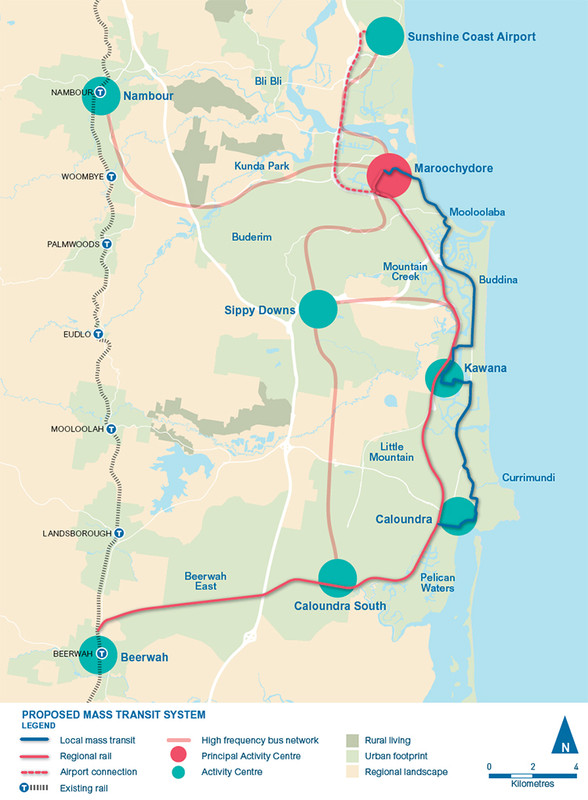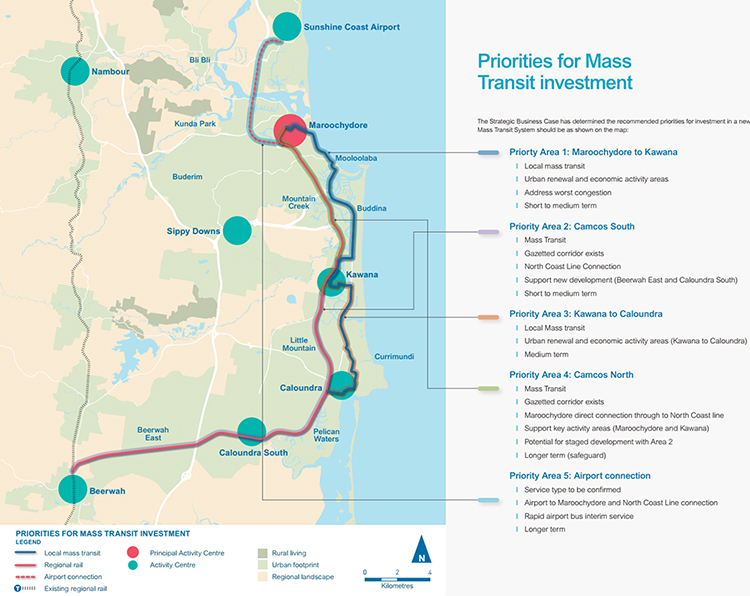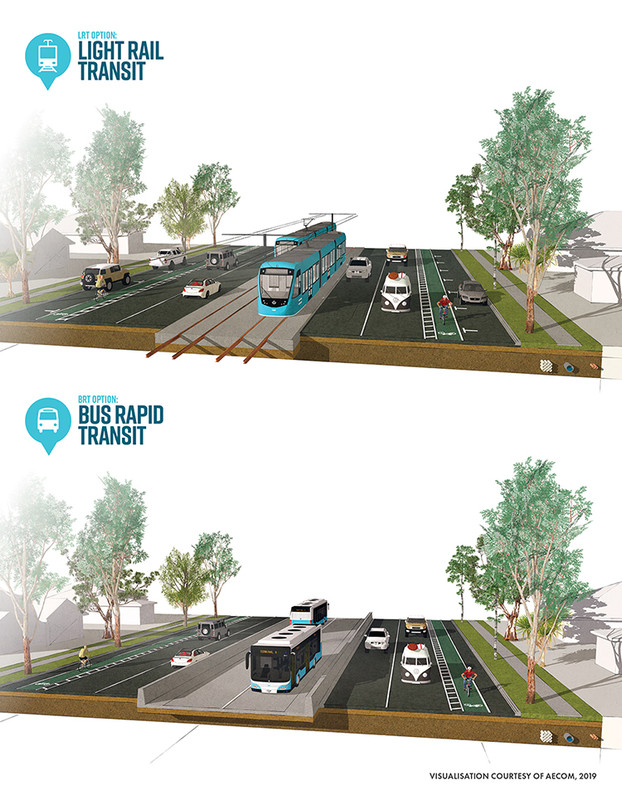Sunshine Coast Mass Transit Project 13 Sep 2019 | Source: Sunshine Coast Council
13 Sep 2019 | Source: Sunshine Coast Council
Sunshine Coast Council has continued to build its case for the development of an integrated mass transit system to service the Sunshine Coast’s growing population.
The Sunshine Coast Mass Transit Project presents an opportunity to
transform the region and deliver a range of economic, land use and transport benefits. It is an essential response to the key transport challenges facing our region as we continue to grow.
The Strategic Business Case has identified four key challenges in relation to the management of the region’s growth:
❙❙ An expanding urban area
❙❙ A changing economic and employment base that needs to keep pace with population growth
❙❙ High levels of car dependence
❙❙ Growing congestion.
On 25 July 2019 Council endorsed the submission to the Queensland Government of the Sunshine Coast Mass Transit Strategic Business Case, representing the completion of the first stage of a government-established review framework through which Queensland and Commonwealth government funding may be accessed.
In addressing Council, Transport Portfolio Councillor Rick Baberowski said, "This has been a journey for this council and if we get this right we can preserve the quality of life in this region long into the future". Read the full media release.
Council has begun work on the next stages of the process including preparation of a Preliminary Business Case, leading to the Detailed Business Case. This comprehensive program of business case work is expected to be completed in 2021 and updates will be posted here to coincide with key milestones.
Funding the business case
In May 2019 the Queensland Government announced it would match council’s investment in the development of the Detailed Business Case for the expansion of the Sunshine Coast’s public transport. This includes costings for light rail, which is currently Sunshine Coast Council’s preferred option.
The announcement marked an important milestone for the project, heralding a sought-after partnership approach to solving transport-related issues for the coast, and at the same time, contributed up to $7.5 million towards the more comprehensive planning required to fulfil the needs of the Detailed Business Case.
Transport and Main Roads Minister Mark Bailey said, “Now is the time for us to work together to map out what is needed and when, so these major infrastructure projects have the best chance possible of securing the funding…”. View a copy of the Premier’s media release.
Video
Features of the Strategic Business Case
This important document establishes why a mass transit project, such as light rail, is so important to the coast’s future, focusing on:
- The coast’s current high levels of dependence on cars and its contribution to road congestion, greenhouse gas emissions, parking pressures and lost productivity
- The economic, environmental and social impacts of urban expansion and the benefits that can be attained through a mass transit system that is supported by urban consolidation
- The potential of a mass transit system that easily connects people to employment nodes to play a role in attracting new industries to the region, enhancing employment opportunities and stimulating regional prosperity.
Importantly, the Strategic Business Case maps priorities for the delivery of the proposed mass transit system.


Mass Transit Technologies
Council has previously considered a range of technologies such as light rail and bus rapid transit and will reconsider these technologies and have regard to other current commercially available mass transit technologies in the development of the Preliminary Business Case.


Timing
The provision of a mass transit system, such as light rail, is a long-term project that requires years of planning, and funding is primarily a Queensland Government responsibility, often in tandem with the Commonwealth. As a result, it is not possible to forecast when such a system might be delivered. Nevertheless, preservation of a corridor is a priority, to ensure project commencement as soon as possible after funds have been secured.

See also
- A - Strategic Business Case (Full Report) - 2019
- B - Strategic Business Case (Summary Document) - 2019
- C - Premier and Transport Minister Announcment - 2019
- D - Urban Transformation Directions Paper - 2017
- E - Consultation Report - 2015
- F - Sunshine Coast Light Rail: Shaping Our Future - 2014
- G - Route Planning & Impact Assessment - 2013
- H - A Line in the Sand (Full Report) Pre-feasibility and Rapic Economic Appraisal Report - 2012
- I - A Line in the sand (summary) Pre-feasibility and rapid economic appraisal report - 2012
- J - Proposed Route for Further Investigation


